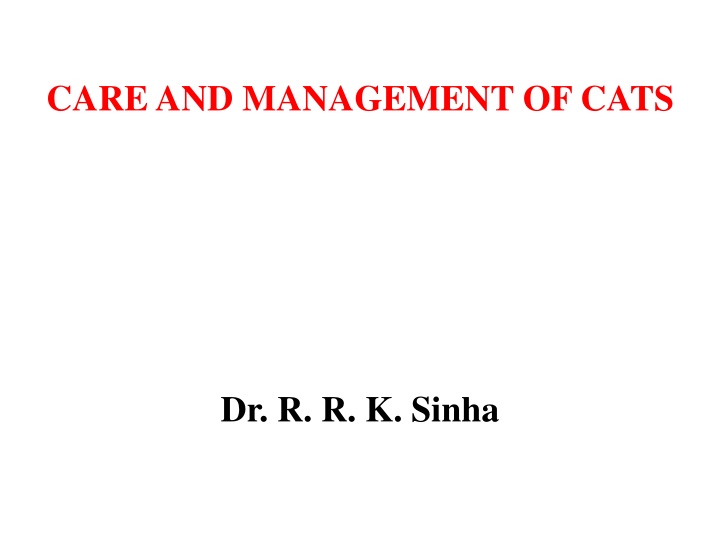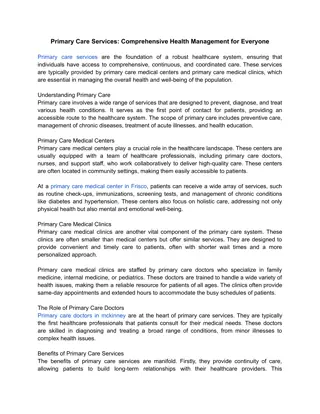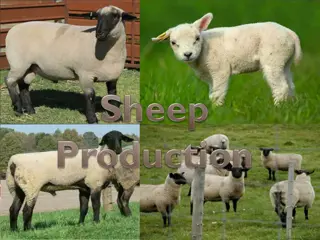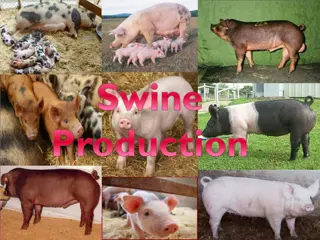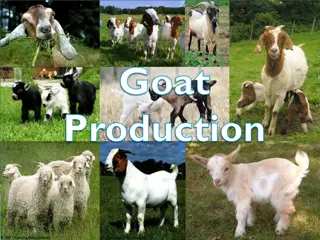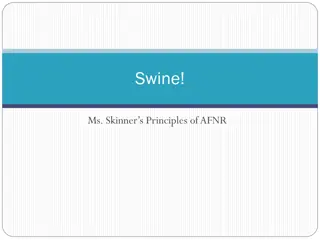Comprehensive Guide to Cat Care and Breeds
Explore the care and management of cats, Zoological Classification, and various cat breeds including Angora, Abyssinian, Japanese Bob Tail, and Persian. Learn about their unique characteristics, coat types, and popular traits. Discover valuable insights on how to best care for your feline companions.
Download Presentation

Please find below an Image/Link to download the presentation.
The content on the website is provided AS IS for your information and personal use only. It may not be sold, licensed, or shared on other websites without obtaining consent from the author.If you encounter any issues during the download, it is possible that the publisher has removed the file from their server.
You are allowed to download the files provided on this website for personal or commercial use, subject to the condition that they are used lawfully. All files are the property of their respective owners.
The content on the website is provided AS IS for your information and personal use only. It may not be sold, licensed, or shared on other websites without obtaining consent from the author.
E N D
Presentation Transcript
CARE AND MANAGEMENT OF CATS Dr. R. R. K. Sinha
CATS Zoological Classification: Class- Mammalia Order- Carnivora Genus- Felis Family- Felidae Species- Domesticus Scientific Name- Felis domesticus Breeds: The cat breeds are broadly classified into two groups depending on the nature of their hair coat.
1. Long hair Coat: Angora Birmans Cream Chinchilla
. Japanese Bob tail Tabby
2. Short Hair Coat: Abyssinians Siamese American Short hair
Manx Rex British Blue
Popular Cats: 1. Angora: This is rather smallest cat with blue or amber colour eyes. It is probably first cat introduced in France. The hair coat is long, fine and soft. White colour is dominant, common and supposed to be purity. Characteristic feature is presence of tufts in between the toes.
2. Abyssinian: The breed was introduced in Britain nearly 150 years ago. Abyssinian is nearly full ruddy brown with black or dark brown markings. Head is long & pointed, eyes broad at base and are green or yellow. The coat is short, fine and close. The cat is intelligent confinement. and doesn t like
3. Japanese Bob Tail: Characteristics features of the breed is longer hind limbs than front but little bit angled towards front side, so that body is as good as levelled during standing. The common colour is black with red/range spots on white background. The tail is extremely short or absent.
4. Persian: The cat have been derived from Angoras. They have long flowing silky coat. The ears are short & well set apart. The legs and tail are short but tail is full of fluffy hairs. The prominent colour is white along with other common colours like cream, red, blue etc.
5. Siamese: This is very popular & intelligent breed. Body is sleek, slender, long and graceful. Eyes are usually blue and almond shaped. Ears are long, pointed and open at the base. The legs are long and slim. The coat colour is creamy with different shades like blue, chocolate, red etc.
6. Tabby: The breed is most popular all over the world. The cat is light brown or grey in colour with darker strips, occasionally showing white patches on lower muzzle, belly or chest.
CAT BREEDING Cats get matured at the age of 5 to 6 months. The gestation period is 60 to 65 days and litter size ranges from 3 to 7 kittens at a time. The eyes of kitten are closed upto 10 days after birth. Similarly kittens are deaf also for some period. The cat prefers to keep young ones in dark & quite corners. The weaning can be carried out at 6 t 7 weeks. Yearly cats can produce 3 litters.
Housing of cat In real sense, cats don t requires any elaborate or separate housing because it lives comfortably in the house of owners. In spite of this cat housing can be broadly classified into two groups: 1. Indoor 2. Outdoor Housing should have warm, comfortable bed with free access for exercise. A house made from cane or wood or plywood box or packing case with straw or newspaper forms an adequate ideal housing and bed. Newspaper bedding can be changed twice or thrice a week or spoiled bedding as per need.
CAT MANAGEMENT To prevent aesthetic nature of long hairs of cat daily grooming is needed, otherwise hairs may form lumps & mite infestation may occur. If severe clumps or matting is found then total clipping is advisable. Cats should not be locked in the house alone without companion during the day otherwise they can cause destruction and spoilage of household materials. Short hair cats don t require grooming because they clean their coat by licking. But it is advisable to practice combing once a day, which avoids falling of hairs in home.
It is not possible to train cats as that of dog for various commands. However they can be instructed and made obedient for toilet manners.
Feeding of cats (Adult) Cat cannot digest dry food in large amount. They need ample amount of water, otherwise there are chances of kidney failure. Normal food is half cup of milk and 80gm of cooked meat and some biscuits. Natural food of cat is freshly killed rats or mouse by herself i.e, it is a good mouser, hence daily meat in their food is necessary. Further, a bowl full of clean water is prime need. Red or white meat or fish is adequate in raw or cooked form.
Mixing of meat with green vegetables also can be fed. Since cats cannot synthesize vitamin A, green vegetable like carrot can fulfil this need. Similarly eggs, fish, cheese with small amount of laxative facilitate normal digestion. The whole milk of cow cannot be digested by cat, hence it should be diluted with water. The daily food requirement is around 25gm/kg of body weight. On an average cat weighs 4 to 5 kg, hence requires about 110 to 115gm of food daily.
Feeding of kitten A new born kitten is fed on mother s milk upto 7 to 8 weeks of age. After this slowly it can be offered fortified cow s milk with glucose or dried milk powder. Orphaned kitten can be reared with fostering. Cow milk as whole is too strong for kitten, hence diluted milk or baby milk powder with double the quantity of water is suitable. Kitten should be fed every 3 to 4 hours with bottle. Rubbing of kitten s belly, after sucking the milk helps in stimulating digestive systems for digestion as well as urination and passing of stool
Vaccination schedule for cats Sl. No. Disease Type of vaccine Vaccination schedule Primary Booster (weeks) (weeks) Route/ Dose Repetition 1. Feline Modified Live Virus 9-10 4 weeks later 1ml s/c or I/m Annually Panleukopenia 2. Feline Herpes Virus Infection Modified Live Virus 9-10 4 weeks later 1ml s/c or I/m Annually 3. Feline Calci Virus Infection - 9-10 4 weeks later 1ml s/c or I/m Annually 4. Rabies Inactivated 15-16 - 1ml s/c or I/m Annually
Vices in Cats 1. Fly bird catching: In spite of good feeding cats kill birds. Some cats develop habit of catching flies. They should be prevented to do these unwanted acts. 2. Spraying: mostly un-castrated toms spray their urine to mark the territory. This is intentional act rather than empting out bladder. In house they spray on curtains or wall which leaves persistent bad smell. As it is difficult to get rid off this habit such cats should be kept out side.
3. Coprophagia: Eating of own faeces. This vice may be due to imbalance feeding, deficiency of P or worms infestation. Timely preventive measures can correct the vice. 4. Shouting: Gurgling or making loud noise at the time of oestrous confinement or need of sex partner are the reasons for the vice which may be dealt accordingly. 5. Cannibalism: Eating of own kitten. Separation of kittens soon after queening and close watch is remedy to control the vice. or mating. Excessive
